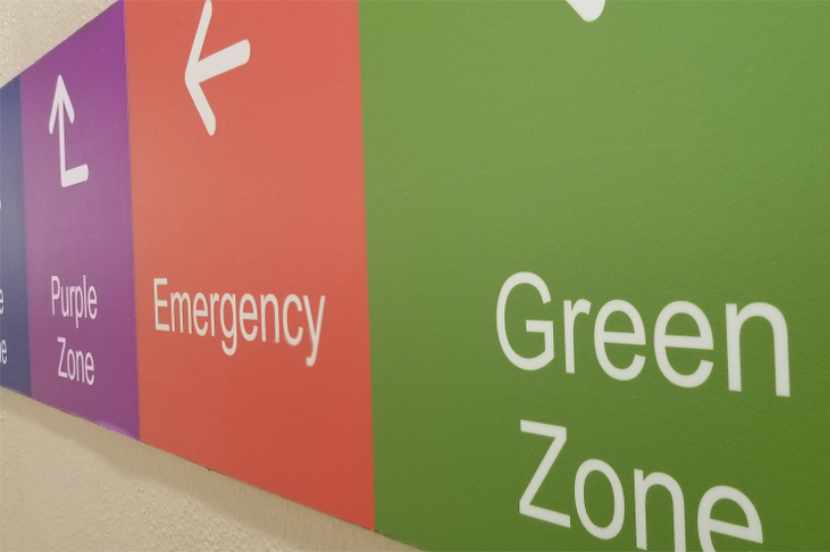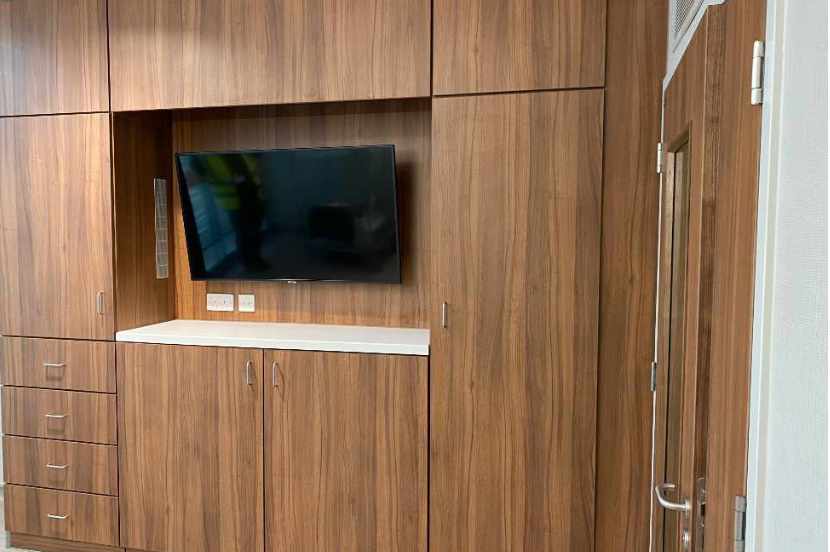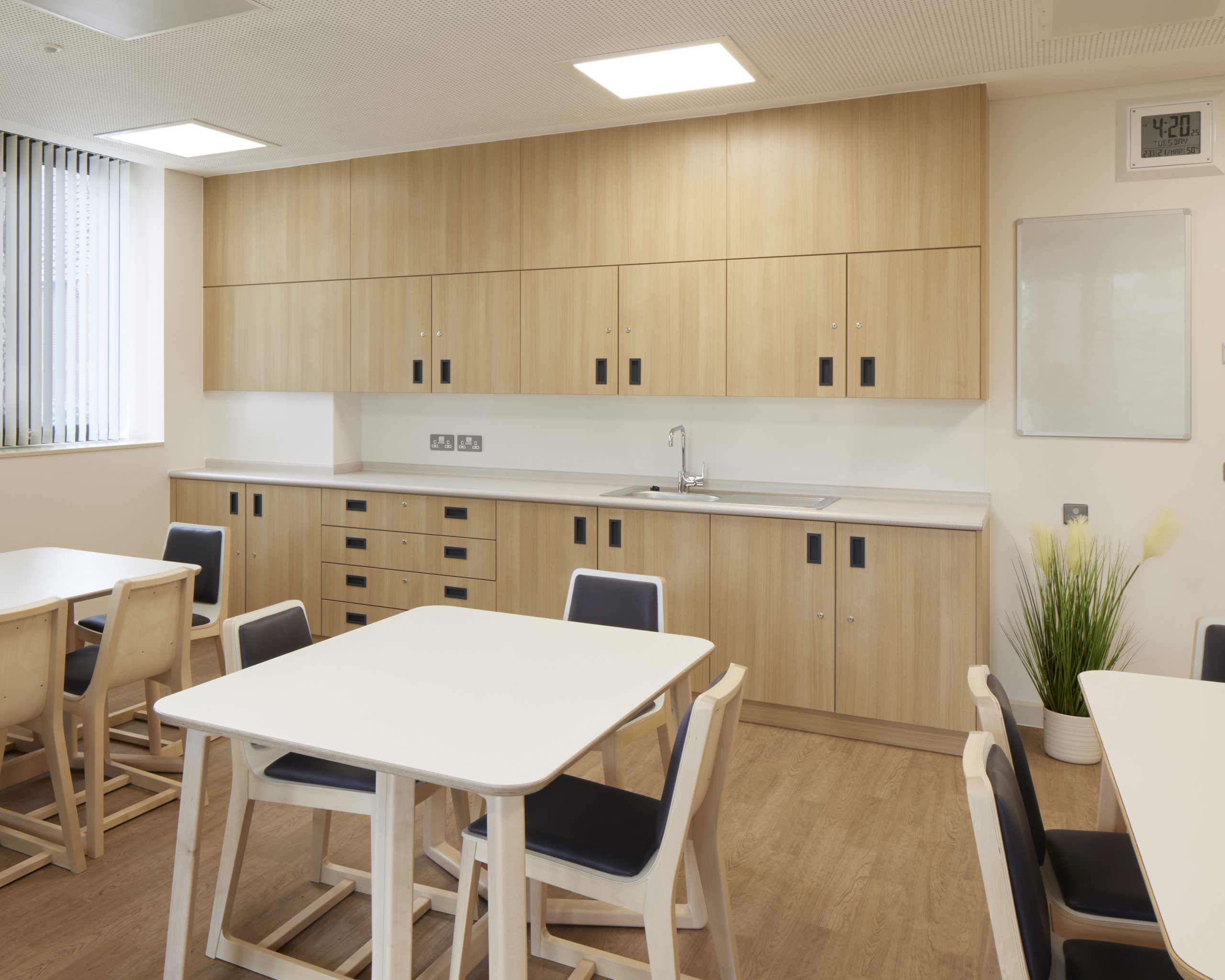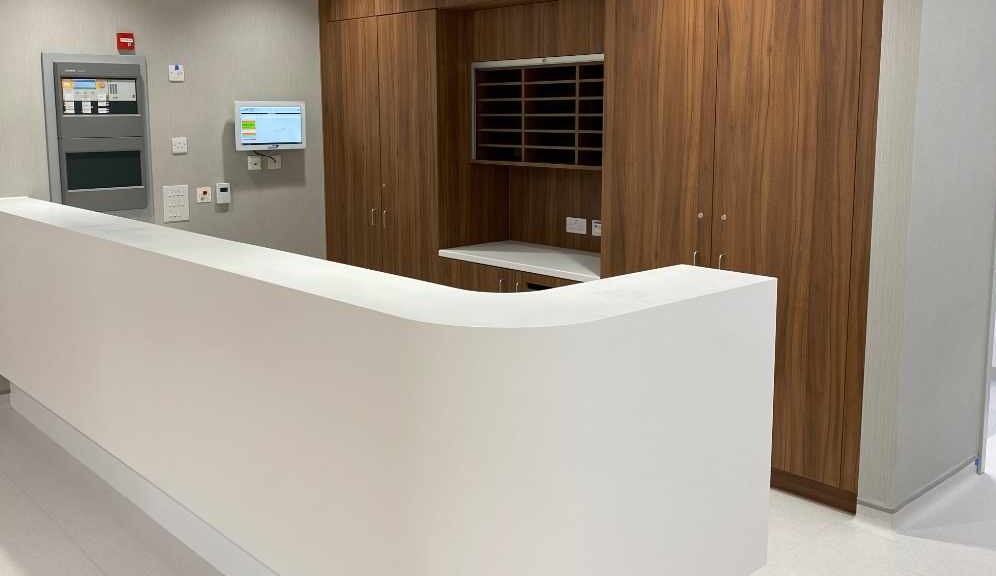Let me invite you into the world of fitted furniture - an environment where precision…

Design trends for better healthcare environments
Healthcare design trends are always moving forward. With each passing year, this seems to happen even more rapidly. Especially in the last few. As video appointments became necessary and healthcare environments became quite stressful for many people, design has become even more important to create a sense of peace and security. Without compromising efficiency and ideal workflows for staff.
Below we will discuss four new design trends that will be seen to be applied in healthcare environments more over the coming years.
Wayfinding

Wayfinding is not a new design concept, but its importance is being highlighted as healthcare facilities are short-staffed and over capacity. Wayfinding design helps people find their way around in a hospital or doctor’s office by signing the way in a few different ways:
- Directional signs
- Informational Signs
- Interactive kiosks
- Colour coding
Directional and informative signs and kiosks are self-explanatory, but colour coding is a clever way to orient patients with their environment. A method we use here at David Bailey Furniture Systems (DBFS) is to provide unit fronts in many different colours that can follow the facility’s colour themes.
For example, all blue-fronted units would be in one area associated with blue – say, paediatrics. Then, green fronted units may be for outpatients. This simple signal helps patients to recognise when they are in the right area.
Recreating a home-like atmosphere

Creating a home-like atmosphere in a healthcare facility is important because it helps patients feel comfortable and relaxed. This, in turn, makes them more likely to follow the doctor’s advice and treatment plans, making them more likely to recover quickly.
Some of the best ways to create a home-like atmosphere are to use soft lighting, comfortable furniture, and a biophilic design to make the environment feel warm and inviting.
Another way to make a healthcare facility feel more home-like is to use natural materials such as wood and stone in the design. Clinical white furniture does not encourage calm.
Aesthetically pleasing backdrops for virtual health

An aesthetically pleasing backdrop for a video call background can be calming and provide a visual focus for the conversation. This is helpful in a healthcare environment as it helps patients to focus on their healthcare provider and subconsciously feel assured about the call.
There are a few things that can make a good backdrop for video health:
- A plain background with minimal distractions
- A neutral colour scheme that is calming and visually pleasing
- A simple, geometric pattern that is not too busy
- A simple background with a few plants and natural lighting.
Less is more for video backgrounds and in real situations also. If all your clutter is tidied away into storage units, it is much more relaxing for the patients (and better for staff). The more there is in the background, the more the patient’s eyes will wander. Clutter does not inspire calm.
Versatile environments

Furniture that can be easily relocated means that healthcare facilities can create versatile environments that are better suited to the needs of the patients and staff.
For example, if a patient needs more privacy, the furniture can be moved to create a more private space. If a patient needs more social interaction, the furniture can be moved to create a more open space. This flexibility also allows the staff to work in the most efficient way possible. Mobile furniture makes the environment optimally versatile to accommodate the different needs of staff and patients at any given time.
The bottom line
The best design trends for healthcare environments are those that make patients feel more comfortable. Doing this does not require new construction or architecture. It can be as simple as installing versatile furniture with patient comfort and operational efficiency in mind.
Read about healthcare furniture projects we have completed for many NHS and private healthcare facilities across the country in our case study section. For furniture compliant with healthcare safety and hygiene standards that looks inviting and improves function, contact the team at David Bailey Furniture Systems.








